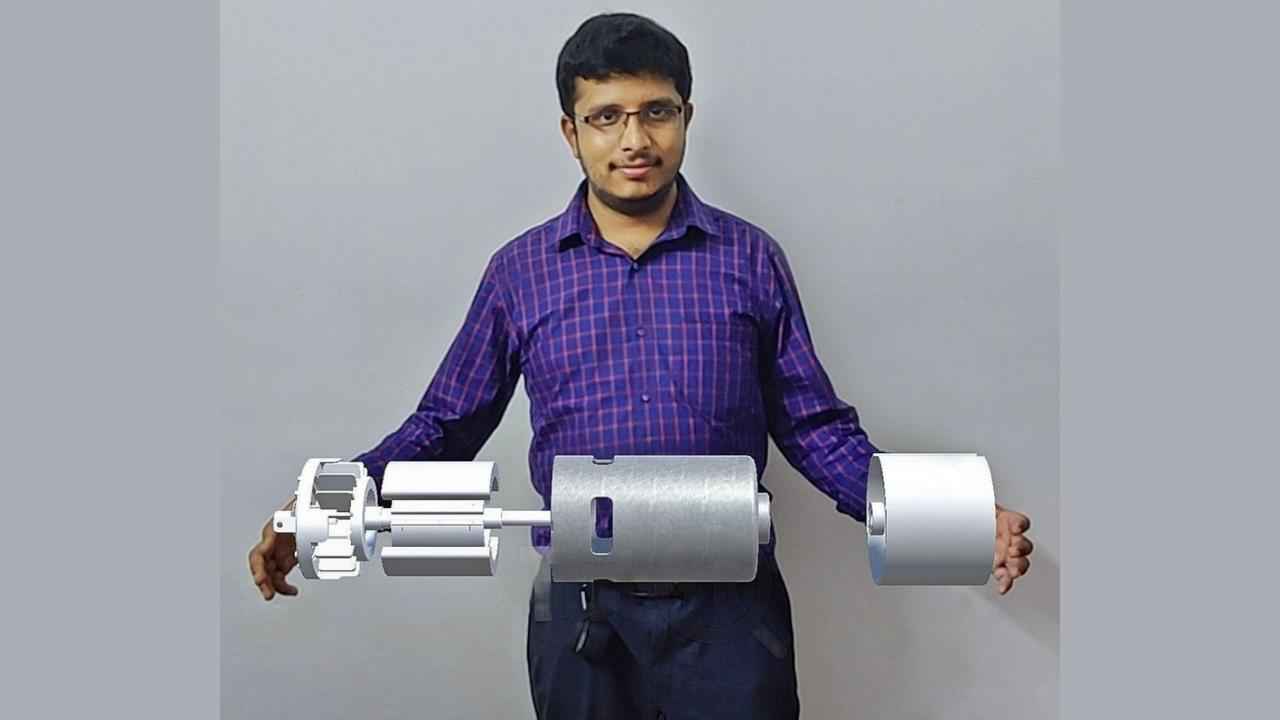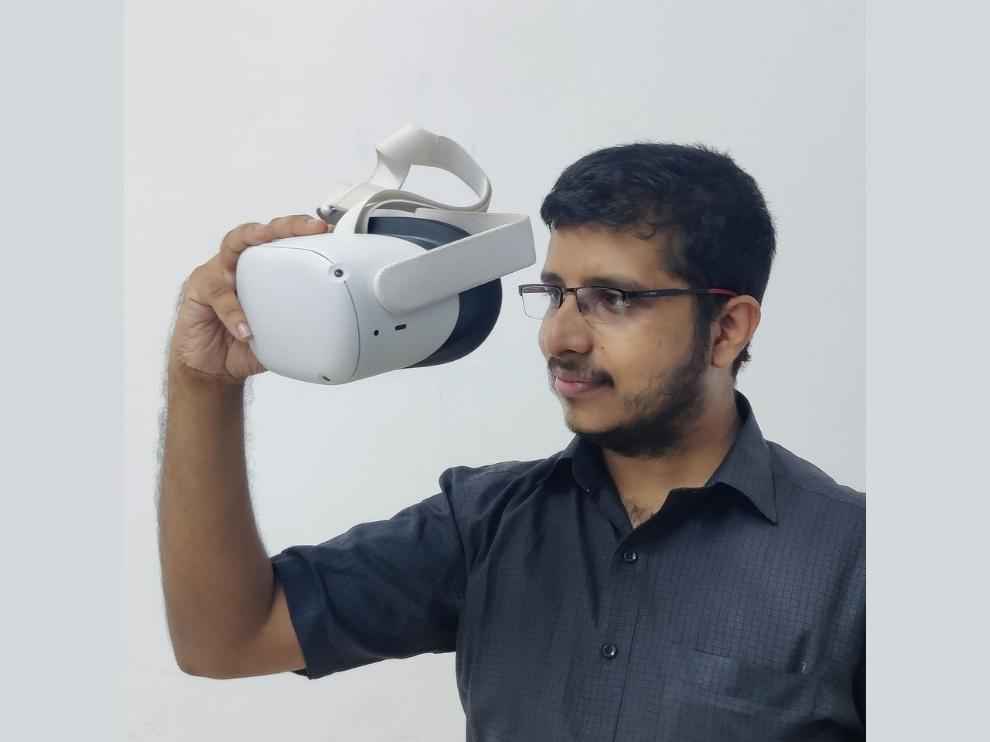TutAR – SuperchARging India’s schools and teachers with Augmented Reality
TutAR is developed by Thrissur-based startup Infusory, in which designers have covered wide-ranging subjects through eye-popping 3-D models
These 3-D models pop up beside teachers on interactive panels – or on Zoom if someone is still taking classes online
The app TutAR was launched in 2020 after a few local schools came onboard with the idea of leveraging augmented reality in classrooms

Last month, Suvith S was flitting around Chennai promoting TutAR Next Reality Classroom, an app powered by augmented reality. It is developed by Thrissur-based startup Infusory, in which designers have covered wide-ranging subjects through eye-popping 3-D models – boars, zebras and hippopotamus for kindergarten kids; anatomy of teeth, skull and muscles for middle schoolers; and wheatstone bridges, potentiometers, and carnot engines for high school nerds. These 3-D models pop up beside teachers on interactive panels – or on Zoom if someone is still taking classes online – and can be rotated and flipped, upside-down, left to right, and front to rear.
 Survey
SurveyIn his usual, time-tested strategy, forty-year-old Suvith, who heads sales and marketing at Infusory, was standing before teachers in Maharishi Vidya Mandir, a privately owned co-ed school in Chennai, when he asked the teachers how they utilise interactive panels installed in classrooms. He got the answer he was expecting: teachers played videos in the classroom, from either YouTube or ed-tech startups. In almost a practiced tone, he recalled telling them, “At the end of the day, these edtech companies and youtubers are teaching your students, and then, what is the point of you being a teacher in the classroom?”
Thomson Tom, founder and Chief Executive Officer at Infusory, agrees with this stance. “If you’re having a YouTube video, the only role the teacher is playing in class is to play and pause. That is not how education is supposed to be.” Shyam Pradeep Alil, Infusory’s co-founder and Chief Technology Officer, feels that the indiscriminate use of bland powerpoint presentations and borrowed videos in classrooms that started after the smartboard revolution in the 2010s led to school teachers losing their importance in education. “There is no student-teacher interaction if all a teacher does is play videos. It’s bad for students. They will not develop character.”
A year ago, Dr Meena, then a principal in Trivandrum’s Sree Gokulam Public School, was convinced by these arguments and started employing TutAR’s 3-D models in classroom learning. “To be frank, I was very happy with the results in classrooms, especially in the Science subjects,” she said. “For example, when a teacher is teaching about a heart, this 3-D model comes right in front of the students, and standing there, she can turn it around and poke it. I can actually show students a beating heart, pumping blood, and it is amazing.” As per the principal, after using augmented reality in classrooms, students have increasingly started interacting with teachers and come up with a lot more questions.
“But that does not mean they don’t need to improve. Rather, they should improve,” she stressed. “They also need to develop interactive models for social sciences and languages. What they have right now is very limited.”
Thomson Tom, the twenty-seven-year-old CEO, wants TutAR to be a teacher’s tool. “We want to empower teachers. With these models, they can make classes a lot more interactive than relying on ready-made content. At the same time, it is the feedback of these teachers who use TutAR that helps us get better. We frequently update and add new models in our app based on teachers’ suggestions.”

The Making of TutAR
The app TutAR was launched in 2020 after a few local schools came onboard with the idea of leveraging augmented reality in classrooms. When TutAR was just an idea – no app, no content – Suvith and co pitched the concept to Thrissur's Nirmalamatha Central School. The administration came on board and asked them when they’d be able to provide the app. “Covid played a major role in enabling tech inside classrooms,” Thomson said. “Covid made teachers create online classes, made them video producers, made them creative directors, made them so tech-savvy that now when we were pitching augmented reality to them, they actually were excited.”
With the promise of getting a solution in three months, Nirmalamatha Central School handed over one lakh rupees to the TutAR trio – Shyam, Suvith and Thomson – and the work began. In the meantime, almost five more schools came forward, and the first version of the app was rolled out in the month of August with a modest fund of around rupees five lakh. “We started with zero. Around the time we registered ourselves, we had around ₹5 lakh to ₹6 lakh, and in three months, we had an app and a full-fledged team of about 30 members,” Thomson said.
Currently, the founders say that TutAR is used by around 200+ schools and over 25,000 teachers across India as well as a few dozens of teachers from Russia, Egypt and the Middle East. The schools are mostly situated in South India – Kerala, Tamil Nadu and Karnataka – with a few up in the North, including Delhi, Jammu, Haryana and Uttar Pradesh. TutAR has curated a library of over 5000 3-D models. The company also recently raised an undisclosed amount in its seed round from April Ventures and SalesboxAI’s founder Roy Ranjan, which the company said in an official statement that it will be used for bolstering technology and hiring world-class content. Along with it, the company sells a contract to a school for around ₹50,000, in which as many as 25 teachers can use the app.

The future of TutAR: Tutarverse
With the plans of expanding across India underway, the founders are also shifting the goalpost. They want to create a metaverse, where students and teachers can collaborate virtually, leveraging augmented as well as virtual reality. “Online education is here to stay. We want it to make it more interactive and bring one-on-one interaction between teachers and students in the ring of online education, too”, Thomson said. The founders are expecting to roll out the metaverse, or so to speak, Tutarverse, in a few months. On the sidelines of all-consuming work, Thomson also has an interesting tale to tell. When he was in college, he was the boss; he ran campus startups. His parents were worried. “My parents wanted me to become a banker, which was considered a safe, secure job. Both of Shyam’s parents were also government employees; they wanted him to follow suit,” he said. In the parents-teachers meeting, Thomson’s teachers told his parents that he might be good, but it would not be worth it if the grades fall.
With half-a-chuckle and little gleam in his eyes, Thomson said, “Now my parents advise other youngsters that they should also apply their brains outside classrooms, maybe run a startup or two.” There might not be any need to say it, but anyway here it goes: Thomson never entered the job market, and he’s proud.
For more technology news, product reviews, sci-tech features and updates, keep reading Digit.in.
Anup Semwal
Anup Semwal writes at the intersection of technology and society. He is currently pursuing Convergent Journalism from AJK Mass Communication Research Centre, Jamia Millia Islamia View Full Profile